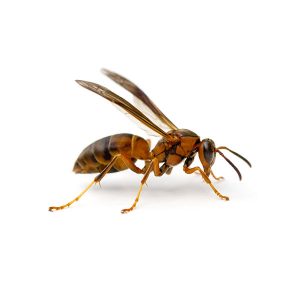Description
Bald-Faced Hornets in Spokane, WA and Coeur d'Alene, ID
Though bald-faced hornets look very similar to their yellowjacket relatives, they can be told apart by the distinctive ivory-white patterns on their faces. Bald-faced hornets are beneficial wasps that can help control the populations of insects such as flies, mosquitoes, cicadas, and bees. However, they have also been known to aggressively defend their nest if they sense a threat, and are capable of stinging multiple times. Bald-faced hornets typically build their nests in areas that are high off the ground, and may even nest inside of human structures such as attics, landscaping features, and sheds. Most colonies contain several hundred individual hornets.
Bald-Faced Hornet Habitat
Bald-faced hornets build their large nests in the early summer by chewing up natural wood fibers. Once completed, these egg-shaped nests are typically grey in color with a very papery texture. Some nests can measure up to 24 inches in length and 30 inches in diameter, and they may resemble a football or basketball when finished. Since bald-faced hornets prefer to live higher off the ground – at least three feet above the floor – they often build their nests in human structures. Areas such as trees, eaves, light structures, attics, and landscaping features are all popular spaces for these wasps to build their homes. Though bald-faced hornets primarily consume other insects such as flies and mosquitoes, they may also eat ripe fruit in gardens, farms, and vinyards. During cold weather with minimal access to food, these hornets may seek shelter and food indoors.
Bald-Faced Hornet Behavior, Threats, or Dangers
Bald-faced hornets are moderately aggressive, and they can sting multiple times in a row. Bald-faced hornet stings are venomous and can lead to pain or swelling for about 24 hours, but they are generally not medically significant. That said, people who are allergic to bee stings should seek medical attention immediately, as a similar reaction can occur from a bald-faced hornet sting. Since these pests frequently build nests near human activity, it is important to keep your eyes open for signs of an infestation. If you encounter bald-faced hornets on or near your property, call a professional hornet control company today for a safe extraction.
Need help with Bald-Faced Hornet control?
We'll call you! Leave your information below.





